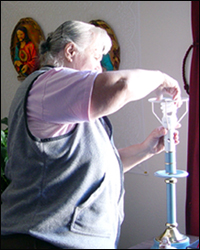| preserve rental homes: overview » nht case studies |
 The City of Seattle and City Light, Seattle's public utility company, donated four Energy Star light bulbs for each of the 60 apartments at Vincent House in Seattle, a federally assisted senior complex. The new light bulbs were part of the Change a Light, Change the World campaign, an effort of the EPA, Department of Energy, and HUD to promote energy efficiency and conservation throughout the nation.
The City of Seattle and City Light, Seattle's public utility company, donated four Energy Star light bulbs for each of the 60 apartments at Vincent House in Seattle, a federally assisted senior complex. The new light bulbs were part of the Change a Light, Change the World campaign, an effort of the EPA, Department of Energy, and HUD to promote energy efficiency and conservation throughout the nation.